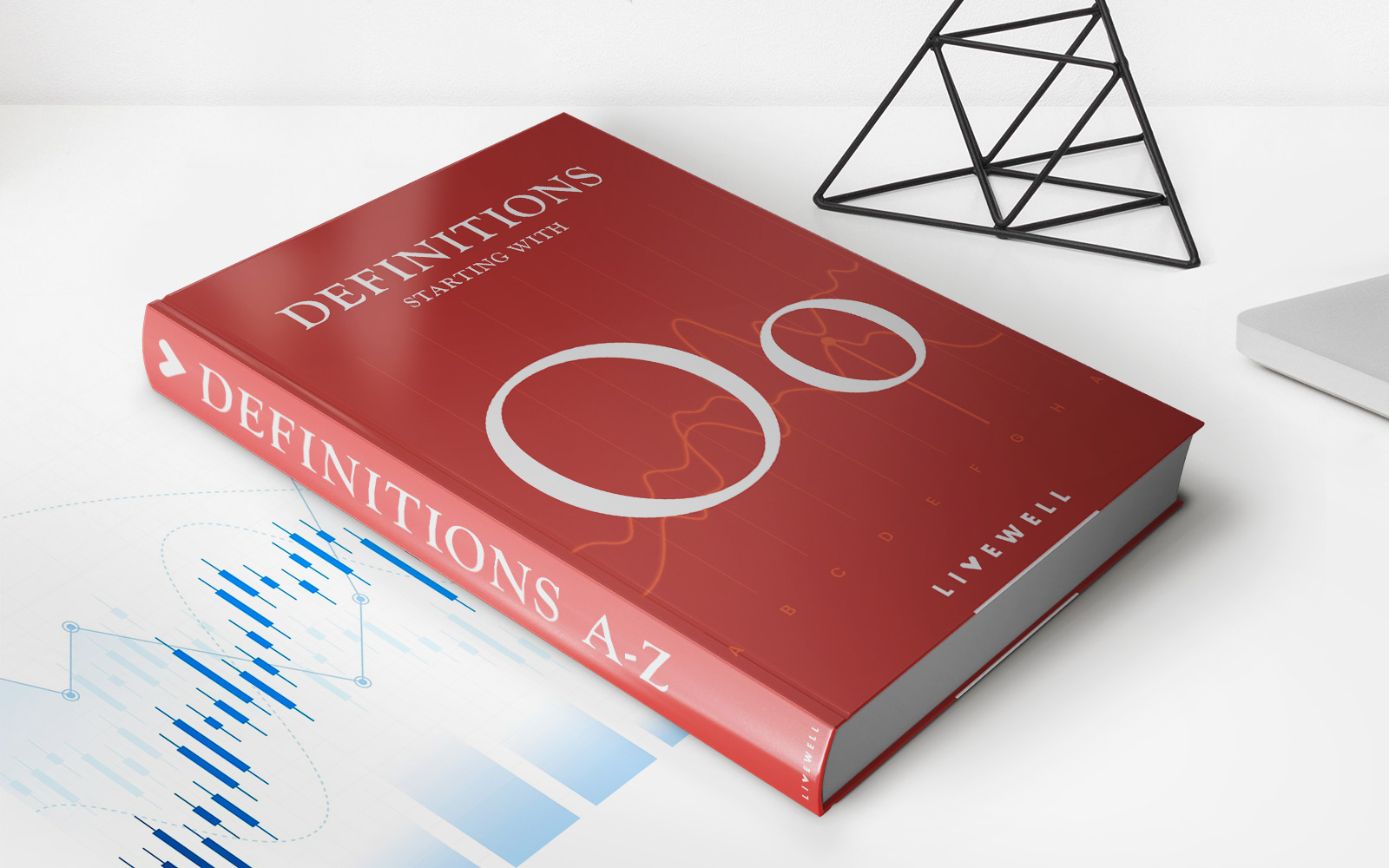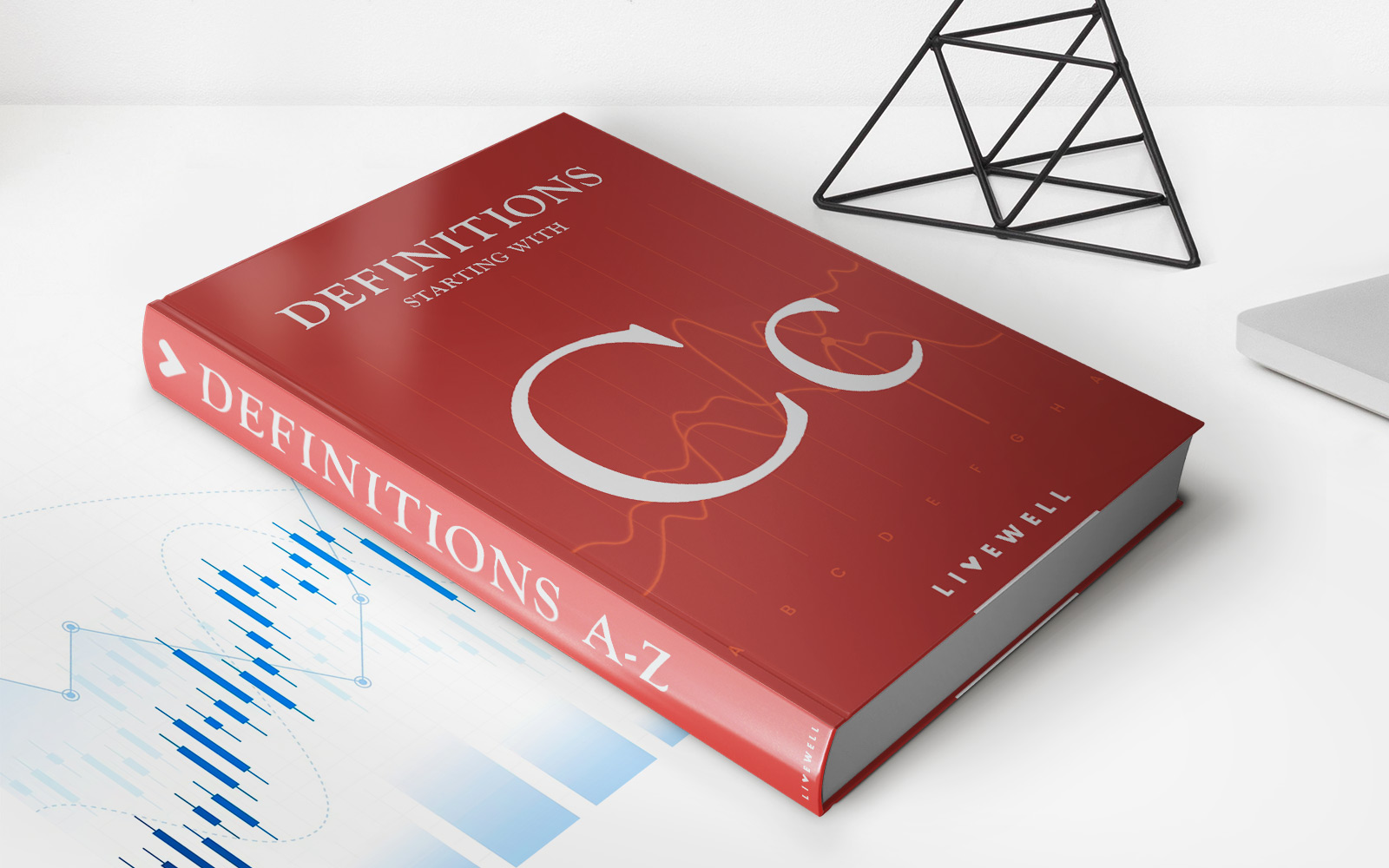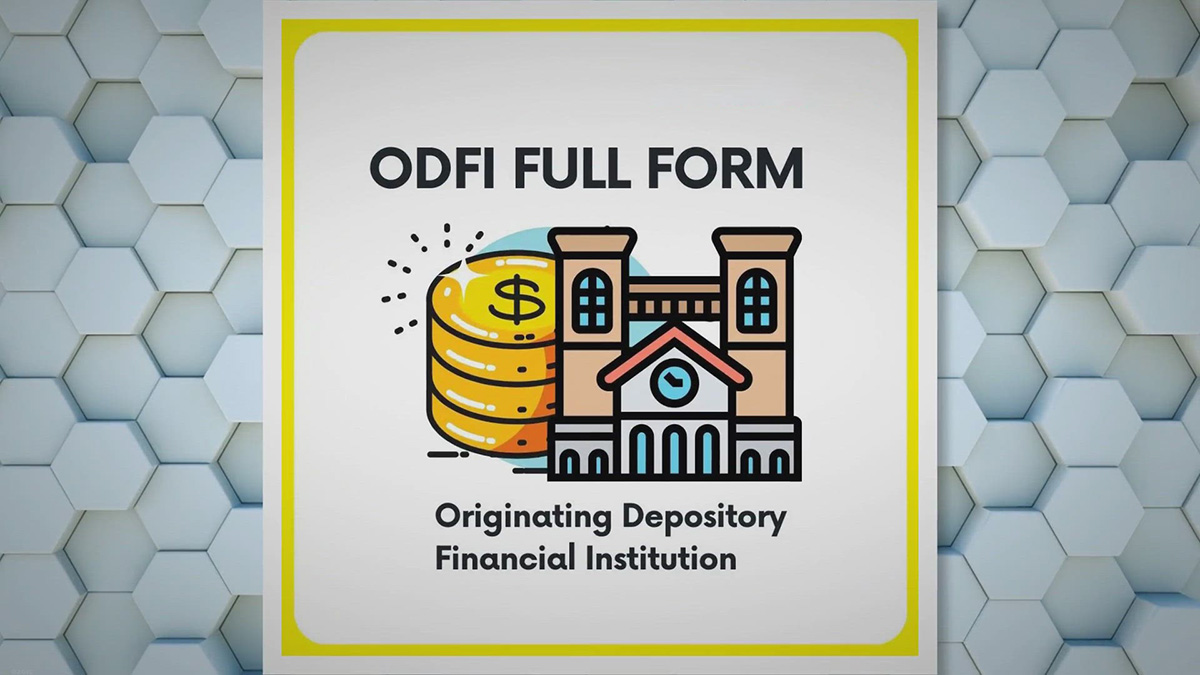Home>Finance>What Is The Difference Between Revolving Credit And Closed-Ended Credit?


Finance
What Is The Difference Between Revolving Credit And Closed-Ended Credit?
Modified: March 10, 2024
Learn the distinction between revolving credit and closed-ended credit in finance. Understand the unique features and uses of each type to make informed financial decisions.
(Many of the links in this article redirect to a specific reviewed product. Your purchase of these products through affiliate links helps to generate commission for LiveWell, at no extra cost. Learn more)
Table of Contents
Introduction
Understanding the Difference Between Revolving Credit and Closed-Ended Credit
When it comes to managing your finances and making informed decisions about credit, it's crucial to understand the various types of credit available to you. Two common forms of credit that individuals encounter are revolving credit and closed-ended credit. Each type has its own unique features, benefits, and potential drawbacks, making it essential to grasp the distinctions between them.
In this comprehensive guide, we will delve into the intricacies of revolving credit and closed-ended credit, shedding light on their fundamental characteristics, usage scenarios, and the key differences that set them apart. By gaining a deeper understanding of these credit types, you'll be better equipped to navigate the complex landscape of personal finance and make prudent choices that align with your financial goals.
Whether you're considering applying for a new line of credit, aiming to enhance your financial literacy, or simply curious about the mechanisms behind credit systems, this exploration of revolving credit and closed-ended credit will provide you with valuable insights and actionable knowledge. Let's embark on this enlightening journey to uncover the nuances of these essential financial tools.
Understanding Revolving Credit
Revolving credit represents a flexible form of borrowing that allows individuals to repeatedly access funds up to a predetermined credit limit. This type of credit does not have a fixed end date, and borrowers can utilize the available credit, repay the borrowed amount, and then borrow again as needed. One of the most common examples of revolving credit is a credit card, where cardholders can make purchases or cash advances within their credit limit and subsequently repay the outstanding balance.
Unlike installment loans, which have a defined repayment schedule and fixed monthly payments, revolving credit offers more freedom and adaptability. Borrowers have the option to carry a balance from one month to the next, as long as they make the minimum required payment. This flexibility can be advantageous for managing fluctuating expenses or unforeseen financial needs, providing a safety net for unexpected costs without the necessity of applying for a new loan each time.
Furthermore, revolving credit often comes with variable interest rates, meaning that the cost of borrowing can fluctuate based on market conditions and other factors. While this variability introduces an element of uncertainty, it also presents the potential for lower interest payments during periods of favorable economic conditions.
It’s important to note that responsible use of revolving credit can contribute to building a positive credit history and improving credit scores, which can facilitate access to additional credit and favorable terms in the future. However, mismanagement of revolving credit, such as consistently carrying high balances or making late payments, can lead to financial strain and negatively impact creditworthiness.
By comprehending the nature of revolving credit, individuals can make informed decisions about its suitability for their financial needs and goals. Understanding the terms, fees, and potential risks associated with revolving credit is essential for leveraging it effectively while maintaining financial stability.
Understanding Closed-Ended Credit
Closed-ended credit, also known as installment credit, represents a structured form of borrowing characterized by a fixed loan amount, a predetermined repayment schedule, and regular, equal payments over the loan term. This type of credit is commonly associated with mortgages, auto loans, personal loans, and other fixed-term borrowing arrangements.
Unlike revolving credit, closed-ended credit does not offer the flexibility of accessing additional funds once the initial loan amount has been disbursed and the loan agreement has been finalized. Instead, borrowers receive the entire loan amount upfront and are required to adhere to the established repayment plan, which typically spans several months or years.
One of the defining features of closed-ended credit is the predictability it offers in terms of repayment obligations. Borrowers know the exact amount of each installment, the total number of payments, and the precise date when the loan will be fully repaid. This predictability can facilitate effective budgeting and financial planning, as borrowers can anticipate and incorporate the fixed loan payments into their monthly expenses.
Furthermore, closed-ended credit often comes with fixed interest rates, providing stability and predictability in the cost of borrowing throughout the loan term. This contrasts with revolving credit, where interest rates may fluctuate, potentially leading to varying monthly interest charges.
For lenders, closed-ended credit offers a level of assurance and risk mitigation, as the structured repayment schedule and fixed loan amount reduce the uncertainty associated with variable borrowing. This can result in more favorable terms and interest rates for borrowers, particularly those with strong credit profiles and stable financial backgrounds.
Understanding the mechanics and implications of closed-ended credit is essential for individuals seeking to finance specific purchases or ventures while maintaining a clear repayment trajectory. By grasping the nuances of installment credit, borrowers can make informed decisions about the most suitable borrowing options for their unique financial circumstances and objectives.
Key Differences Between Revolving Credit and Closed-Ended Credit
While both revolving credit and closed-ended credit serve as vital financial tools, they diverge in several fundamental aspects, influencing their applicability and impact on borrowers and lenders. Understanding these disparities is crucial for individuals navigating the realm of credit and seeking the most suitable borrowing options for their specific needs.
Access to Funds:
- Revolving Credit: Offers the flexibility to access funds repeatedly up to a predetermined credit limit, allowing borrowers to borrow, repay, and borrow again as needed.
- Closed-Ended Credit: Provides the entire loan amount upfront, with no option to access additional funds once the loan agreement is finalized.
Repayment Structure:
- Revolving Credit: Does not have a fixed end date, enabling borrowers to carry a balance from one month to the next and make variable payments based on the outstanding balance.
- Closed-Ended Credit: Involves a structured repayment schedule with fixed, equal payments over the loan term, culminating in the full repayment of the loan by a specific date.
Interest Rates:
- Revolving Credit: Often features variable interest rates, leading to fluctuating borrowing costs based on market conditions and other factors.
- Closed-Ended Credit: Typically comes with fixed interest rates, providing stability and predictability in the cost of borrowing throughout the loan term.
Usage Scenarios:
- Revolving Credit: Suited for managing fluctuating expenses, addressing short-term financial needs, and building a positive credit history through responsible use.
- Closed-Ended Credit: Ideal for financing specific purchases or ventures, such as buying a home, a car, or funding a major expense, while maintaining a clear repayment trajectory.
Risk and Predictability:
- Revolving Credit: Carries the risk of potential interest rate fluctuations and the temptation to carry high balances, but offers flexibility and adaptability in managing ongoing financial needs.
- Closed-Ended Credit: Provides predictability in repayment obligations, stable borrowing costs, and a structured framework for budgeting and financial planning, but lacks the flexibility of accessing additional funds.
By recognizing these key disparities, individuals can make informed decisions about whether revolving credit or closed-ended credit aligns more closely with their financial objectives, risk tolerance, and borrowing preferences. Both forms of credit offer distinct advantages and considerations, and understanding their differences is essential for navigating the diverse landscape of borrowing opportunities.
Factors to Consider When Choosing Between Revolving and Closed-Ended Credit
When evaluating the most suitable credit option for individual financial needs and goals, several critical factors come into play. Understanding these considerations can empower borrowers to make informed decisions and select the type of credit that aligns with their unique circumstances and preferences.
Financial Flexibility: Revolving credit provides a high degree of flexibility, allowing borrowers to access funds as needed and manage fluctuating expenses. In contrast, closed-ended credit offers predictability in repayment but lacks the flexibility of accessing additional funds once the loan is finalized. Individuals should assess their ongoing financial needs and determine the level of flexibility required to address unforeseen expenses or opportunities.
Interest Rate Stability: While revolving credit may feature variable interest rates, closed-ended credit often comes with fixed rates, providing stability and predictability in borrowing costs. Borrowers should consider their comfort level with potential interest rate fluctuations and evaluate the impact of variable rates on their repayment capacity.
Long-Term vs. Short-Term Needs: Individuals seeking to finance specific purchases or ventures with a clear repayment trajectory may find closed-ended credit more suitable. On the other hand, those managing ongoing or short-term financial needs, such as daily expenses or periodic cash flow fluctuations, may benefit from the flexibility of revolving credit.
Credit Building and Management: Responsible use of revolving credit can contribute to building a positive credit history and improving credit scores, potentially facilitating access to additional credit and favorable terms in the future. Borrowers should consider the impact of their credit management on long-term financial goals and weigh the potential benefits of leveraging revolving credit for credit-building purposes.
Budgeting and Planning: Closed-ended credit offers a structured repayment schedule, enabling effective budgeting and financial planning with fixed, equal payments over the loan term. Individuals who prioritize clear repayment obligations and precise budgeting may find closed-ended credit more conducive to their financial management approach.
Risk Tolerance: Assessing one’s risk tolerance is crucial when choosing between revolving and closed-ended credit. Revolving credit introduces the risk of potential interest rate fluctuations and the temptation to carry high balances, while closed-ended credit provides stability but lacks the flexibility of accessing additional funds. Understanding and aligning with personal risk tolerance is essential for selecting the most suitable credit option.
By carefully considering these factors, individuals can make informed and strategic decisions regarding the choice between revolving credit and closed-ended credit. Evaluating one’s financial needs, risk appetite, and long-term objectives is pivotal in selecting the most appropriate credit tool that complements individual circumstances and promotes financial well-being.
Conclusion
As we conclude our exploration of revolving credit and closed-ended credit, it becomes evident that both forms of credit play distinct roles in the financial landscape, offering unique benefits and considerations for borrowers and lenders alike. Understanding the differences between these credit types is essential for individuals seeking to make informed decisions about their borrowing options and align their credit choices with their financial objectives.
Revolving credit stands out for its flexibility, allowing borrowers to access funds repeatedly up to a predetermined credit limit, manage fluctuating expenses, and potentially build a positive credit history through responsible use. On the other hand, closed-ended credit provides predictability in repayment obligations, stability in borrowing costs, and a structured framework for financing specific purchases or ventures while maintaining a clear repayment trajectory.
When choosing between revolving credit and closed-ended credit, individuals must consider factors such as financial flexibility, interest rate stability, long-term versus short-term needs, credit building and management, budgeting and planning, and risk tolerance. By evaluating these critical considerations, borrowers can align their credit choices with their unique circumstances, preferences, and long-term financial goals.
Ultimately, the decision to utilize revolving credit or closed-ended credit hinges on a thorough understanding of one’s financial needs, risk tolerance, and the potential impact of each credit type on overall financial well-being. Both forms of credit offer distinct advantages and considerations, and selecting the most suitable option requires careful assessment and strategic decision-making.
By leveraging the insights gleaned from this comprehensive guide, individuals can navigate the complex terrain of credit with confidence, making informed choices that support their financial stability, credit management objectives, and overarching financial aspirations. Whether addressing short-term financial needs, financing specific purchases, or building a robust credit history, the knowledge gained from this exploration empowers individuals to wield credit as a strategic tool for enhancing their financial health and achieving their long-term financial objectives.














